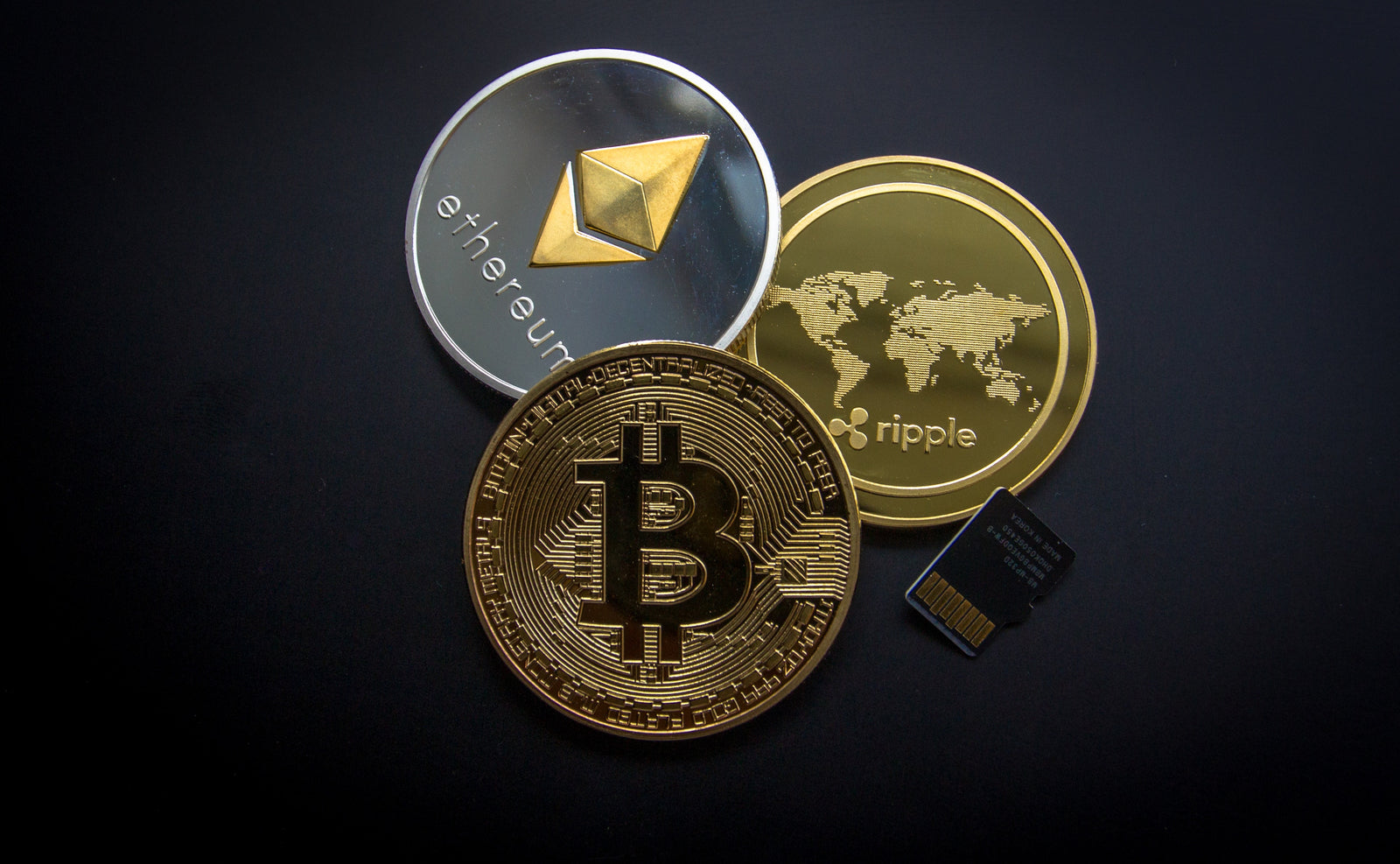Crypto Turns Out To Be Nothing But A Massive Pump And Dump Scheme Fueled By Widespread Manipulation

We have finally reached the long-predicted "Crypto Winter" where a number of major crypto companies such as Celsius Network, Voyager Digital and Zipmex have filed for bankruptcy protection, major crypto funds such as Three Arrows Capital have failed, and the price of all cryptos has fallen dramatically. To folks who remember the 2000 "dot.com" crash, this probably seems all too familiar. One day, crypto is the next big thing promising unlimited riches; the next, crypto seems like a bottomless pit of failures and the life savings of hundreds of thousands suddenly wiped out. May we then take this moment to reflect objectively, without all the hype of the next super-valuable token, on the crypto sector.
In the end, crypto was simply the latest financial mania, one of many such manias in history that probably has as the most famous the so-called Tulip Mania in the Dutch Republic between 1634 and 1637. Manias occur largely because some asset starts going up rapidly in value such that the public's interest is caught and then investments into the asset become widespread as easy and massive wealth seems to be within reach of the average investor. This of course drives the asset value far past its fundamental value (the value reasonably calculated by its functional utility), such as during the tulip bulp mania where tulip bulbs were sold at one point for roughly ten times the average income of a skilled artisan. Eventually, however, an inflection point is reached where the high price can no longer be sustained. The ensuing fall in price causes concern by investors that they need to get out as quickly as possible, and this creates the inevitable stampede for the exits where many are crushed in the process.
In modern finance, the selling stampede is actually much worse, because many investors purchased their interests with margin credit, and as the price goes down, these investors are forced to liquidate increasing amounts of their interests to meet their margin calls, thus triggering even more selling, more price deterioration, and more margin calls, until the so-called margin death spiral comes into effect which finally bottoms the price after wiping out billions in wealth. This happened with crypto, just like it happened with the dot.coms in 2000 and also with mortgage-backed securities and their related derivatives in 2008.
The point is that manias may be identified by the price of an asset class far exceeding its fundamental value, which (again) is measured by the utility of the asset. With the most common assets, these are determined by a bond's risk-adjusted yield, a stock price/earnings (P/E) ratio, or with commercial property by the rentals that it generates, etc. & etc. The dot.com crash, for instance, occurred largely because nearly all the dot.com companies were start-ups and thus didn't have any P/E ratio to begin with, and didn't develop enough revenues to save them when the market finally turned. The 2008 crash largely occurred because the mortgage-backed securities failed to meet their expected yield. And so forth and so on.
That brings us back to crypto. What is the utility of crypto such that we can measure its financial value? Despite talk by pundits about crypto being variously a store of value or a way easily transmit money across borders, the hard truth is that crypto does not really have a fundamental value other than perhaps for dark transactions (porn, illicit drugs, money laundering) that are of dubious societal value. Put otherwise, if all crypto completely disappeared tomorrow, who exactly would miss it?
Perhaps crypto does have some nominal value based on its dark money usage, or collectability along the lines of Beanie Babies, but from a financial viewpoint that value is hardly worth considering. There will also always be the true believers in crypto who will buy it because one day they think they will get a Lambo out of the deal if it ever again dramatically increases in value ("moons") someday. Otherwise, back in the real world, if one wants to store value, there are banks, treasuries, precious metals, and other artwork and collectibles that are highly unlikely to lose value, and if one wants to transmit money abroad, well, we've been doing that for years without crypto through wire-transfers.
So, if the value of crypto is nominal, then why did it reach such high prices from 2020 through the spring of 2022? The answer is the same reason as with tulip bulbs and every other mania, which is that there was an expectation that the price was going to keep going up and that would lead to amazing investment returns. Indeed, it did for some folks, at least those smart enough to cash out around the highs, but for everybody else it ended about like every other mania does, being with huge losses for the masses.
But crypto is different, or one might argue new, in at least one respect: The high crypto prices were driven by social media, and not just networking between similarly interested investors. What supercharged crypto prices were the efforts of social media influencers who touted their pet cryptos to the masses and then watched as prices soared.
The rise of paid influencers is an integral part of social network marketing by companies. Some influencers are paid big dollars by companies to sell their products, while lesser influencers are given free products by companies in the expectation that their brands will be touted. There is nothing inherently wrong with this, as it seems to be the natural evolution of celebrities such as Michael Jordon selling Nikes.
The difference is that when one starts looking at financial assets, the use of influencers and other mechanisms to artificially drive up the value of an asset is something traditionally known as market manipulation, and it is highly illegal.
In our security markets, the price of assets is supposed to go up and down based on fundamentals: If Apple has a good quarter, then its stock price should go up; if Apple has a bad quarter, it goes down. That didn't happen with crypto. Instead, the price of crypto went up for one reason and one reason only: The crypto companies and large investors in crypto used influencers and others to manipulate the price upwards for their own benefit. One only need to look at a few of the gazillion blurbs on YouTube.com about cryptos during its run-up period to see lots of people touting particular cryptos to others to try to make their cryptos go up in value. That is the one and only reason that the values of cryptos went up, as certainly the use of cryptos did not increase appreciably during this same time period, i.e., there was utterly no change in the (meagre) fundamentals of crypto to cause these stratospheric price hikes.
A question that should be asked is where were the security regulators in all this? Either the U.S. Securities & Exchange Commission (SEC) or the Commodities Futures Trading Commission (CFTC), or both, should have been keeping an eye on all this. Those two regulatory agencies have long been charged with protecting U.S. investors (there are similar regulatory agencies in other countries of course). At least with the SEC, they were again asleep at the switch as they were during the run-up to the 2008 financial crisis caused by the complex derivatives ― and ratings agencies that would give a used candy bar wrapper at least a AA rating if paid to do so ― that the SEC was charged to regulate.
Even worse, the SEC actively fought against regulating crypto, at least in the case of one SEC commissioner who actively criticized at least some of the proposed regulation of crypto, being the so-called "Crypto Mom" Hester Pierce, who may now in retrospect be marked forever safe against any serious allegations of being a deep thinker. What actually did happen with the crypto mania and its losses for investors was as foreseeable as the sun coming up in the East. Now, after the fact, once again attempting to close the barn door long after the horse has left the gate and taken with him the life savings of many thousands of folks who were duped into thinking that crypto investments were "safe", there are finally tangible proposals being put forth to regulate crypto.
This does not include just the mere failures of crypto companies which had business plans that combined some combination of unbridled optimism with fantasy, but also quite predictably crypto also attracted numerous bad actors in the form of Ponzi scheme operators. Once the price of crypto started to fall, these Ponzi schemes started to become exposed and now hardly a week passes that we do not hear of some crypto Ponzi scheme or another, such as EminiFX that has been alleged to be a $1 billion fraud. Indeed, because is perhaps the most ideal asset ever developed for Ponzi schemes, both the SEC and CFTC should have seen the rapid proliferation of these schemes coming a regulatory mile away.
But all that draws away from the salient point: What exactly is there to regulate, when crypto's entire existence is little more than a giant pump-and-dump scheme where the companies themselves used influences and others to manipulate the price of the their units, and then when the price is high insiders and smarter investors dump their units on the lesser investors who cannot afford the loss?
If you want a good example of this, take Celsius Network which filed for Chapter 11 bankruptcy protection with an estimated $1.2 billion dollar shortfall to cover its investors' deposits. Now, one might think that the units in Celsius ($CEL) would quickly to go zero and stay there, what with a bankrupt company having a financial hole the size of Alaska in it and not allowing any investor withdrawals. But no, due to pumping on social media, the price of $CEL has actually increased in value since the bankruptcy. That doesn't happen in the absence of manipulation, although in fairness to Celsius Network this does not seem to be any of the company's work but rather certain outsiders conducting their own pump and dump.
Crypto investments are purely speculative in nature. They go up when people then they will go up, and they go down when people think they will go down. There is utterly no correlation between the price of crypto and any actual or perceived social value, much less any fundamental value. Crypto units only go up in price because there is a perception that they will go up in price, and the only way that happens is through market manipulation. So what is there to regulate? Stop the market manipulation, and the crypto industry will die a quiet death, and, again, who is going to miss it?
Of course, the goal of the crypto lobby will be to block any meaningful regulation of crypto, and they'll probably be more successful in doing that than one might suspect. Just look at the regulatory changes that came after the 2008 financial crash: Those regulatory changes were superficial to begin with, many were quickly rolled back, and yet as we sit here today we still face the same "too big to fail" scenarios which will require massive taxpayer bailouts as they did then.
Congress and its alleged regulators, the SEC and CFTC, can at the very least do one thing that would help protect people from having their life savings lost in some future crypto scheme, which is to ban crypto investment from retirement plans and accounts. There is utterly no social justification for allowing purely speculative investments such as crypto into retirement plans or accounts, any more than there would be in allowing people to use their IRA funds to purchase lottery tickets. If you don't think that this is a problem, consider that mutual-fund giant Fidelity has announced utterly appalling plans to allow certain crypto in the 401(k) plans that it manages. Retirees' best interests at heart? Not at Fidelity, and of course once they do it then everybody else will do it too just to compete for funds, the suitability of crypto in retirement accounts be damned.
The best solution would be for the SEC or CFTC, or whichever one of them eventually is tasked with regulating crypto, to aggressively pursue market manipulation within the crypto space. For without market manipulation, the price of crypto doesn't go up, expectations of future easy riches are not created, and average folks will not get cashed out again with the tokens of a bankruptcy crypto company.
Otherwise, it would not come as any particular surprise if class action lawsuits were filed by jilted investors against some of the more higher-profile and deeper-pocketed influencers who pumped some of the crypto companies and their units. There is little doubt that these influencers engaged in blatant market manipulation, not to the promotion of essentially unlicensed securities, and one would not expect the average jury to be kind to them. We'll have to watch and see whether that happens, but if it does then it will be of legal interest of the most juicy kind.





Jay Adkisson
Author